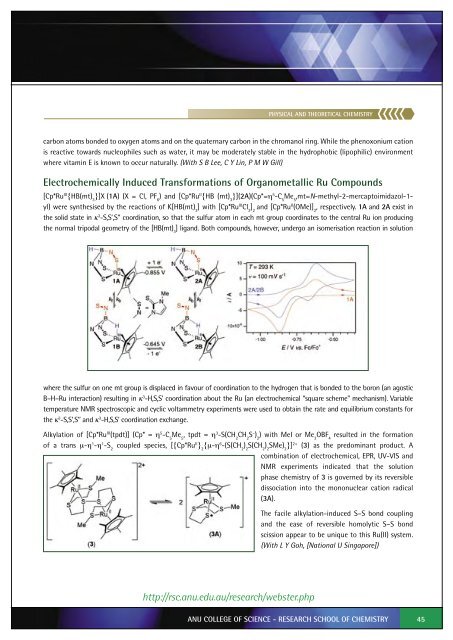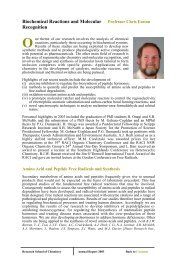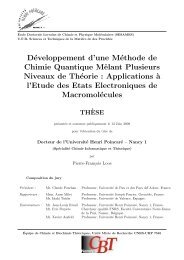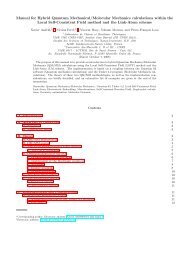View 2005 Report - RSC - Australian National University
View 2005 Report - RSC - Australian National University
View 2005 Report - RSC - Australian National University
Create successful ePaper yourself
Turn your PDF publications into a flip-book with our unique Google optimized e-Paper software.
PHYSICAL AND THEORETICAL CHEMISTRY<br />
carbon atoms bonded to oxygen atoms and on the quaternary carbon in the chromanol ring. While the phenoxonium cation<br />
is reactive towards nucleophiles such as water, it may be moderately stable in the hydrophobic (lipophilic) environment<br />
where vitamin E is known to occur naturally. (With S B Lee, C Y Lin, P M W Gill)<br />
Electrochemically Induced Transformations of Organometallic Ru Compounds<br />
[Cp*Ru III {HB(mt) 3<br />
}]X (1A) (X = Cl, PF 6<br />
) and [Cp*Ru II {HB (mt) 3<br />
}](2A)(Cp*=η 5 -C 5<br />
Me 5<br />
,mt=N-methyl-2-mercaptoimidazol-1-<br />
yl) were synthesised by the reactions of K[HB(mt) 3<br />
] with [Cp*Ru III Cl 2<br />
] 2<br />
and [Cp*Ru II (OMe)] 2<br />
, respectively. 1A and 2A exist in<br />
the solid state in κ 3 -S,S’,S’’ coordination, so that the sulfur atom in each mt group coordinates to the central Ru ion producing<br />
the normal tripodal geometry of the [HB(mt) 3<br />
] ligand. Both compounds, however, undergo an isomerisation reaction in solution<br />
where the sulfur on one mt group is displaced in favour of coordination to the hydrogen that is bonded to the boron (an agostic<br />
B–H–Ru interaction) resulting in κ 3 -H,S,S’ coordination about the Ru (an electrochemical “square scheme” mechanism). Variable<br />
temperature NMR spectroscopic and cyclic voltammetry experiments were used to obtain the rate and equilibrium constants for<br />
the κ 3 -S,S’,S’’ and κ 3 -H,S,S’ coordination exchange.<br />
Alkylation of [Cp*Ru III (tpdt)] (Cp* = η 5 -C 5<br />
Me 5<br />
, tpdt = η 3 -S(CH 2<br />
CH 2<br />
S – ) 2<br />
) with MeI or Me 3<br />
OBF 4<br />
resulted in the formation<br />
of a trans μ-η 1 -η 1 -S 2<br />
coupled species, [{Cp*Ru II } 2<br />
{μ-η 6 -(S(CH 2<br />
) 2<br />
S(CH 2<br />
) 2<br />
SMe) 2<br />
}] 2+ (3) as the predominant product. A<br />
combination of electrochemical, EPR, UV-VIS and<br />
NMR experiments indicated that the solution<br />
phase chemistry of 3 is governed by its reversible<br />
dissociation into the mononuclear cation radical<br />
(3A).<br />
The facile alkylation-induced S–S bond coupling<br />
and the ease of reversible homolytic S–S bond<br />
scission appear to be unique to this Ru(II) system.<br />
(With L Y Goh, [<strong>National</strong> U Singapore])<br />
http://rsc.anu.edu.au/research/webster.php<br />
ANU COLLEGE OF SCIENCE - RESEARCH SCHOOL OF CHEMISTRY<br />
45






